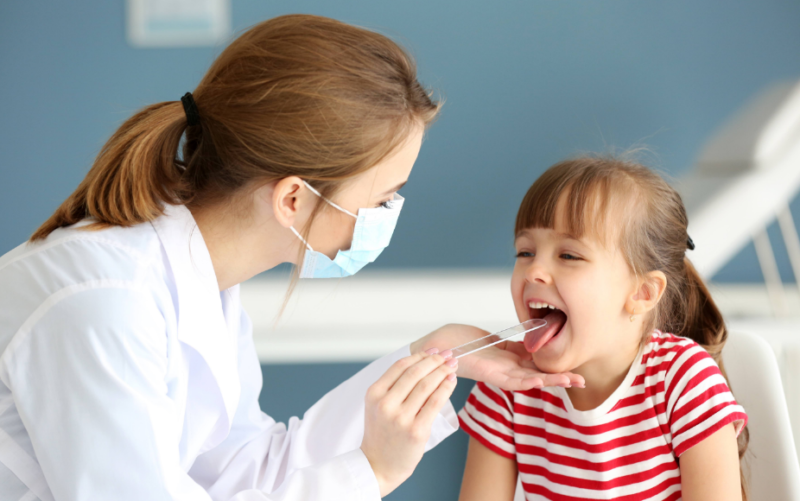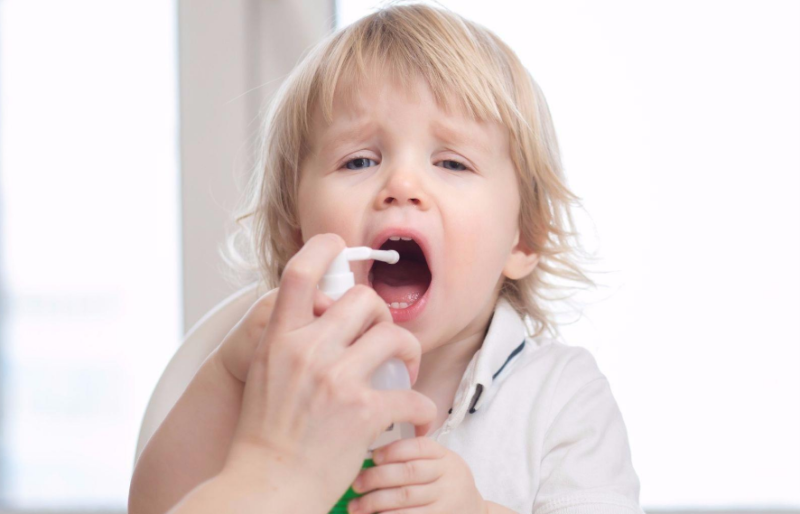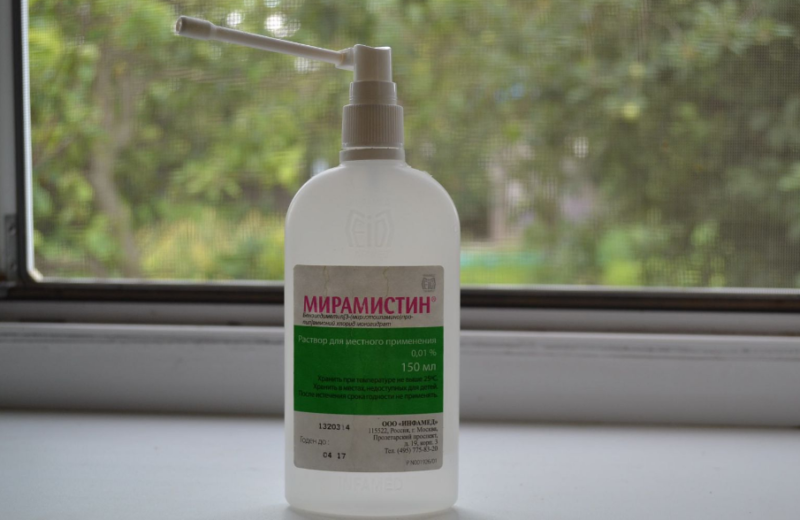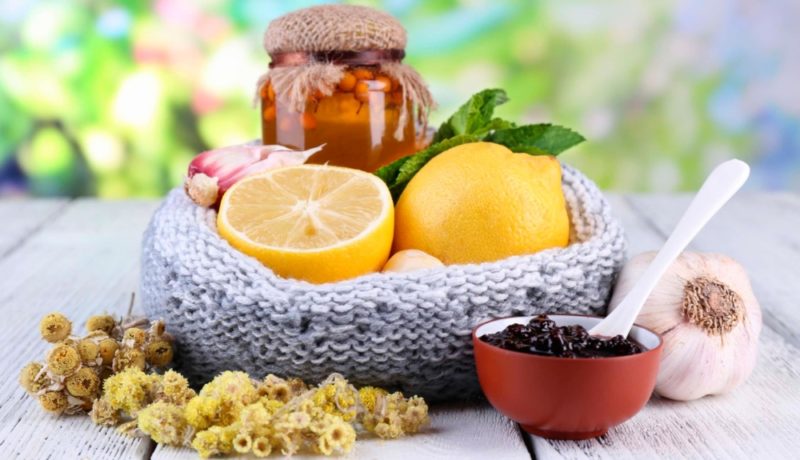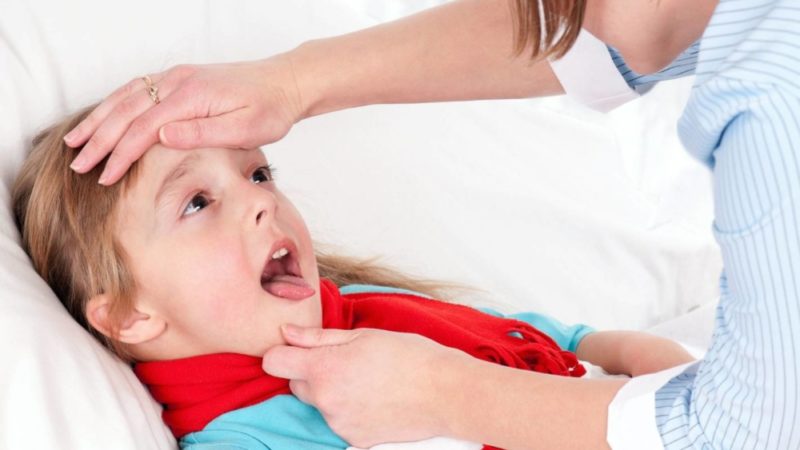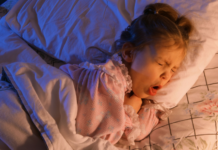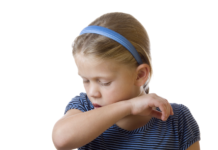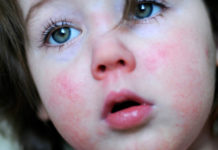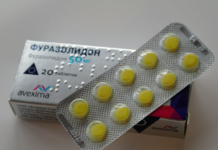Inflammation of the mucous membrane of the oropharynx (lat. Oropharynx) is caused by pathogenic viruses, bacteria or allergens. Symptoms and treatment of pharyngitis in children depend on the causes and nature of the disease, the age of the patient. Medicines and folk remedies are used to relieve discomfort in the throat, eliminate inflammation and prevent complications.
Material Content:
What is pharyngitis
The pharynx is part of the respiratory and digestive tracts, conducts air from the nasal cavity to the larynx and trachea. The mucous organ is sensitive to pathogens, cold and hot air, toxins. Young children are most susceptible to viral infection of ENT organs.
The inflammatory process with pharyngitis, unlike tonsillitis, develops not in the tonsils, but behind them.
Inflammation of the pharynx can occur at any time of the year, but in winter, children have a higher risk of acute pharyngitis. The contrast between inhaling cold air in the street and warm dry in the room affects. The mucous membranes dry out, become less protected. A predisposing factor is a decrease in immunity.
Pathogens are contained in droplets of saliva, sputum, transmitted by coughing, sneezing, talking from a sick adult or child to healthy children. Often there is an epidemic spread of infection in children's groups.
Types and forms of the disease
The cause of acute pharyngitis is most often viruses, bacteria and fungi. Infection spreads down the pathways from the nasal cavity and nasopharynx. Targets of viral particles are cells of the mucous membrane and lymphoid tissue of the pharynx. The incubation of pathogens lasts from 2 to 5 days.
- Bacterial pharyngitis is caused by pathogenic strains of streptococci, staphylococci, pneumococci, pathogens of scarlet fever, diphtheria. Bacteria are rapidly spreading in families and school classes. The patient is contagious to others within 2 weeks.
- Typical pathogens of a fungal infection of the oropharynx are microorganisms of the genus Candida. Candida pharyngitis is characterized by the appearance of cheesy plaque, the formation of round ulcers on the mucosa. As a rule, a fungal infection of the oral cavity and pharynx develops in infants against the background of thrush in the mother, non-compliance with hygiene rules.
- The causes of allergic pharyngitis are allergens in the composition of air or food. Acute inflammation can be triggered by hot foods and drinks, chemicals, thermal burns, and mechanical injuries of the throat.
Pharyngitis is often sick in the winter after inhaling cold air, due to seasonal hypovitaminosis, weakening of the immune system. Often the focus of a viral infection is in the nasal cavity, bacterial in the mouth (carious teeth).
- With catarrhal pharyngitis, throat discomfort is less pronounced. The disease develops more often if the child has a predisposition to allergic reactions. Catarrhal pharyngitis causes acid reflux from the stomach to the esophagus and pharynx (reflux). The causes and conditions of occurrence may be hormonal changes, second-hand smoke.
- Chronic pharyngitis develops after incomplete or improper treatment of acute inflammation, in the absence of therapy. Symptoms are implicit. Discomfort in the throat persists for more than 3 months.
- Granular pharyngitis is accompanied by a thickening of the pharyngeal mucosa due to the growth of lymphoid follicles. With the atrophic form of the disease, the pharyngeal epithelium becomes thinner, its dryness increases.
Symptoms and features of the course in children
The incubation period depends on the pathogen. Symptoms of viral pharyngitis develop within 3 to 5 days. Most often, typical symptoms of acute inflammation of the ENT organs appear. The patient complains of a sore throat, headache.
Symptoms of acute pharyngitis in children (infectious disease):
- a hoarse voice;
- body temperature is elevated;
- the back wall of the pharynx and palatine arches are reddened, swollen;
- sore throat is more felt when swallowing, talking;
- parotid and submandibular lymph nodes increase, hurt;
- dry cough (unproductive, without sputum);
- the tongue is covered with white coating;
- headache.
If viral pharyngitis proceeds without complications, then the temperature remains normal or rises to 37.1 - 38 ° C. A sore throat is felt for several days. Viruses weaken the immune system, facilitate the penetration of bacteria. Infection with beta-hemolytic streptococcus is often accompanied by the formation of purulent follicles on the mucosa.
Candida infection is characterized by the appearance of cheesy plaque, rounded ulcers (aphthae).
Breast babies cannot talk about pain. They recognize the onset of pharyngitis and tonsillitis in children up to a year by indirect signs. Appetite worsens, anxiety, redness of the eyes, coughing (not necessary) appear. Toddlers refuse food and drink due to pain when swallowing. The temperature can rise sharply to 39 - 41 ° C. Sometimes the disease is accompanied by nausea and diarrhea.
With bacterial pharyngitis, runny nose and dry cough are less common. Purulent process is accompanied by fever, headache and muscle pain, nausea, vomiting. Follicles (vesicles) of a yellowish-white color form.
Symptoms of chronic pharyngitis:
- sore throat, frequent coughing;
- foreign body sensation in the throat, lump in the neck;
- cough without sputum or with viscous mucus;
- dry mouth
- bad dream.
In the phase of exacerbation of the chronic form of the disease, burning, perspiration and sore throat intensify. Bright red tubercles may appear on the back of the throat. Swelling and redness of the mucosa are more pronounced.An acute or chronic disease should be treated with the identification and elimination of the causes of inflammation of the pharynx.
Diagnostic measures
To prescribe therapy, it is necessary for the doctor to establish the nature of the infectious agent and the etiology of non-infectious pharyngitis. The pediatrician at the reception does not always offer to be tested.
In the cold season, sore throat in young children is almost 90% due to a viral infection. In the uncomplicated form of the disease, symptomatic treatment is prescribed.
The clinical picture in the initial stage of viral and bacterial pharyngitis is similar. Doctors use the McAzek scale, which allows, based on symptoms, to determine the likelihood of streptococcal nature of the inflammatory process in the throat.
If a bacterial infection of the pharynx and palatine tonsils is suspected, a microbiological examination is prescribed. In the laboratory, a throat swab is taken to perform bacterial culture and identify the pathogen. You can get the result of this analysis only after a few days. Microbiological examination makes it possible to check the sensitivity of bacteria to various antibiotics. To clarify the nature of inflammation, doctors also prescribe a blood test.
The cause of throat diseases in children over 5 years of age are most often pathogenic strains of staphylococcus, beta-hemolytic streptococcus. The presence of the latter in sputum is determined using the Streptatest indicator strip (sold at the pharmacy). Rapid testing is carried out within 20 minutes. If the result is negative, then the disease is most likely caused by viruses.
Methods for treating pharyngitis in a child
The duration of therapy for acute pharyngeal inflammation without complications is up to 5 days. The most dangerous attachment of a secondary bacterial infection. Treatment will require more time (10-14 days), higher risk of complications.
It is important to relieve the sick child of the symptoms of the disease, to eliminate the causes of inflammation. It should not be forgotten that raising the temperature to certain limits helps the body fight the infection, coughing helps to cleanse the airways. Symptomatic treatment helps the patient feel better, etiotropic therapy helps to cope with the cause of the disease.
Medications
In mild cases, only antiseptic gargles, anti-inflammatory sprays, lozenges for resorption in the mouth are used. The ingredients of local remedies are almost not absorbed into the bloodstream, have few side effects.
Breast infants are treated with the mucous membrane of the cheeks, the hard palate is folded four times with a bandage moistened with a suitable solution. Use "Miramistin" diluted with half-chilled boiled water, means "Akvalor throat", chamomile infusion. The fluid enters the back of the throat with sucking movements. Vinilin balm, dental gels for children, intended for pain relief during teething, are applied to the firm palate and gums of the baby.
Breasts should not be allowed to dissolve tablets, spray aerosol in the throat.
Medicines for the symptomatic treatment of pharyngitis:
- lozenges or lozenges “Neo-Angin”, “Faringosept”, “Septolet Neo”, “Lizobakt”;
- rinse solution "Miramistin";
- sprays "Tantum Verde", "Hexoral".
A child over 3 years old is irrigated with a throat undiluted Miramistin using a special nozzle attached to the package. The frequency of use of the spray for pharyngitis is from 4 to 5 times a day, the course is from 4 to 10 days. Rinse with this antiseptic three times a day.
- Aerosol "Bioparox" with an antibiotic is used for microbial throat infections in children older than 2.5 years.
- The local antibacterial drug "Lizobact" is intended for the treatment of patients from 3 years.
- With fungal pharyngitis, “Hexoral”, “Stomatidin” are used.
- To reduce the temperature, reduce pain, children are prescribed syrups, rectal suppositories: "Nurofen", "Panadol", "Kalpol", "Ibufen", "Cefekon-D".
- Antihistamine drops and syrups “Fenistil”, “Zirtek”, “Lorahexal”, “Erespal” reinforce the effect of anti-inflammatory therapy.
- The expectorant "Lazolvan" with pharyngitis is taken orally to soften the throat, thin and remove thick sputum.
The benefit of symptomatic therapy is a decrease in the number of pathogens in the mucosa, relief of the patient's condition, and acceleration of recovery.
Antiviral agents help better in the early stages of pharyngitis. Viruses that have already penetrated the cells are not accessible to drugs. Within 5 to 10 days, the body produces an immune response. Protective cells themselves suppress a viral infection.
Drugs to stimulate local and general immunity increase the effectiveness of the body's fight against pathogens. It is advisable to start taking the funds of these groups within the first 3 days after the onset of the viral disease. During seasonal infections, immunomodulatory agents are prescribed for prophylactic purposes.
- For the treatment of infectious diseases of ENT organs, tablets and granules are used to prepare the Ribomunil solution (from the age of 6 months).
- In case of viral pharyngitis, rectal suppositories “Viferon”, “Polyoxidonium”, “Anaferon” and “Galavit” tablets are used. Doctors prescribe inside the antiviral, immunomodulating drugs "Arbidol", "Kagocel", "Cycloferon", "Tsitovir 3".
"Tonsilgon" in the form of drops and dragees increases the body's resistance to infection, has an anti-inflammatory effect.
Children under 2 to 3 years old can be given antibiotics immediately (without tests) to prevent complications. Antibacterial therapy prevents the development of purulent tonsillopharyngitis. Amoxicillin with clavulanic acid (“Augmentin”), macrolides or cephalosporins are prescribed orally. A baby who has pain and fever should stay in bed.
Folk remedies
Rinses, compresses (in the absence of pus), foot baths improve the well-being of the patient. For compresses use cottage cheese, cabbage leaf, a bag of heated salt, sand or herbs. It is useful to make hot foot baths with mustard powder before bedtime.
- In the first year of life, chamomile infusion can be used to irrigate the mucosa. A warm solution is collected in a small syringe (not used for other purposes), a disposable syringe without a needle. The adult takes the baby in his arms, directs a weak stream of liquid to the hard palate, the inner surface of the cheeks. When a child swallows a solution, the product enters the throat. A small volume of infusion is used to irrigate the mucosa every hour.
- Breastfeeding babies and older kids can drink chamomile tea. The tool has an anti-inflammatory effect, soothes and cleanses the mucous membrane of the oropharynx, palatine tonsils. Children after 8 - 9 months are prepared with clarified chicken broth (from breast), given tea with linden blossom and rosehip.
Drinking plenty of fluids helps remove toxins from the body.
- Older children can gargle with a solution of salt and soda (1 teaspoon per 200 ml of warm water). Add 1 - 2 drops of iodine tincture.
- Use rinses of infusions of medicinal sage, fruits of fennel, peppermint, a suspension of sea buckthorn oil in warm water.
- Traditionally used for perspiration and sore throat is warm milk with honey. A simple folk remedy is the resorption in the mouth of honey (1 tsp.). Offer overnight to children over 12 months. Insist onion juice on honey. Offer the child to dissolve in the mouth. This product, diluted with warm water, is used to rinse. Any remedy is given to a child who does not have allergies or intolerances to consumed products.
Possible complications and consequences
In advanced cases, the infection spreads to the larynx, Eustachian tube, paranasal sinuses, middle ear.The complications of pharyngitis include: laryngitis, tracheobronchitis, sinusitis, eustachitis, otitis media. Severe consequences of untreated acute inflammation of the pharynx: cervical lymphadenitis, acute articular rheumatism, pharyngeal abscess, edema and respiratory failure.
Disease prevention
It is recommended to avoid crowded places during the season of acute respiratory infections. Parents should take care that the child does not inhale too cold or dry dusty air, tobacco smoke. Strengthening immunity helps prevent pharyngitis and quickly cure when infected. In order to prevent the development of complications, it is necessary to observe bed rest in the early days of the disease and follow the appointment of a pediatrician.




